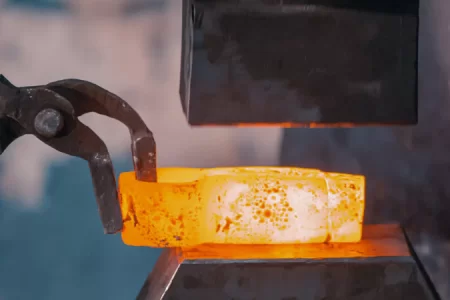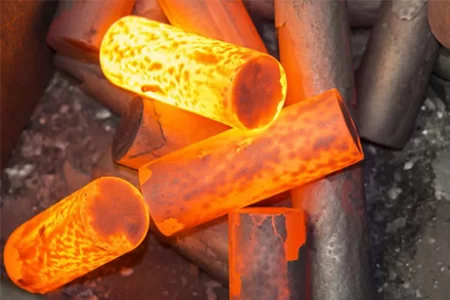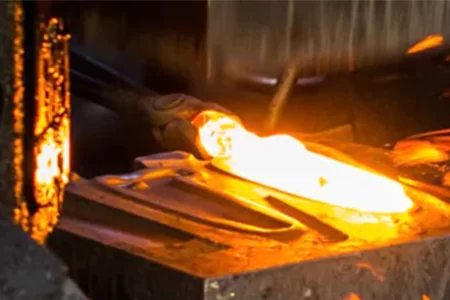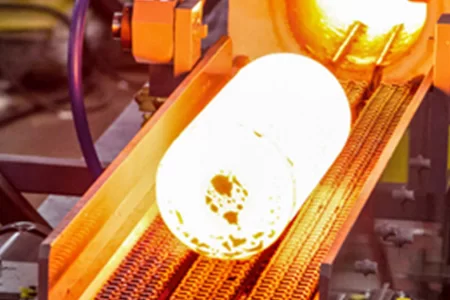By sharing knowledge, experience and views in the field of forging technology, we help you understand, learn and apply relevant technologies.

Hulk Metal Forging Technology
Share technical experience
-
Home>
-
Blog>
-
Technology>
Jaw wire grip made of high-strength alloy steel: a comprehensive analysis from material selection to production process

Jaw Wire Grip is one of the indispensable tools in the construction of power and communication lines. Its core function is to clamp the conductor or wire rope to ensure smooth and safe construction during the wire-pulling process. In order to ensure that Jaw Wire Grip can perform well under harsh working conditions, the material selection, manufacturing process, surface treatment, and other aspects of Jaw Wire Grip must meet strict requirements to ensure its long-term service life and stability under high strength and high pressure.
High-strength alloy steel material
The core components of Jaw Wire Grip, especially the clamping part, must have sufficient strength and toughness to withstand the huge tension and wear generated during use. The main material we use is high-strength alloy steel, especially 35CrMo alloy steel. This steel not only has high yield strength and tensile strength but also has good toughness and wear resistance, which is suitable for tool parts that work for a long time under high stress and high impact load.
Alloy steel types
Alloy steel is divided into three types according to the content of alloy elements: low alloy steel (<5%), medium alloy steel (5%-10%), and high alloy steel (>10%).
The alloy element content of low alloy steel is usually below 5%, with excellent strength, toughness, and weldability, and is often used to manufacture heavy-load components such as bridges and building structures.
The alloy element content of medium alloy steel is between 5% and 10%, and its performance is between low alloy steel and high alloy steel. It is often used to manufacture equipment such as ships, boilers, and pressure vessels that require corrosion resistance and high-temperature resistance.
The alloy element content of high alloy steel exceeds 10%, and the typical representative is stainless steel, which has extremely strong corrosion resistance and oxidation resistance and is widely used in equipment manufacturing in the chemical industry, food processing, and other industries.
In addition, alloy elements in alloy steel such as manganese, chromium, nickel, molybdenum, etc. can significantly improve the hardness, wear resistance, and impact resistance of steel. Therefore, alloy steel is not only widely used in structural parts, but also used to manufacture high-performance materials such as tool steel and bearing steel. Different types of alloy steels also have different heat treatment and machining properties, and the appropriate material needs to be selected according to the specific use environment.
About 35CrMo
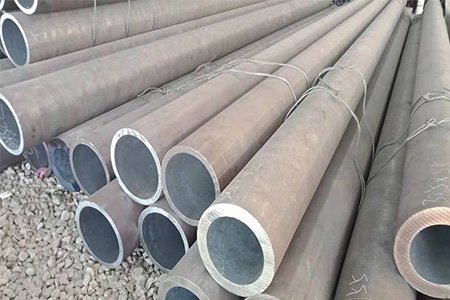
35CrMo is a low-alloy high-strength steel. Due to its excellent mechanical properties, it is widely used in the manufacture of heavy-duty mechanical parts, such as high-strength bolts, gears, shaft parts, etc. In the application of Jaw Wire Grip, 35CrMo steel can effectively resist tension and wear, and its good toughness also ensures that there will be no breakage or permanent deformation during repeated clamping and release. This makes the Jaw Wire Grip we manufacture meet international standards in strength and durability.
Die forging process
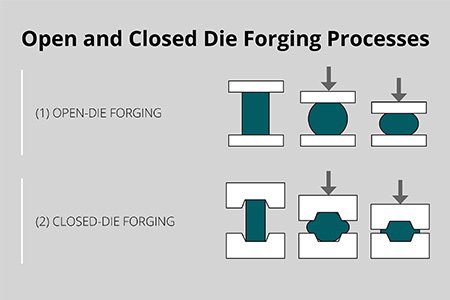
Die forging is a key process in the manufacturing process of Jaw Wire Grip. The advantage of die forging is that it can make the metal plastically deform under uniform force, thereby obtaining a denser metal structure and improving the comprehensive mechanical properties of the material. The die forging process we use is mainly divided into two categories: open die forging and closed die forging.
Open die forging
Open die forging means that during the forging process, the metal billet is partially exposed outside the die, and the final shape of the forging is not completely restricted by the die. This process is suitable for manufacturing Jaw Wire Grip parts with relatively simple shapes and large sizes. The open die forging process can achieve the preparation of complex shapes through multiple forging steps and has high production efficiency in mass production. Although its accuracy is not as good as closed die forging, through subsequent processing, we can ensure the dimensional accuracy and surface quality of Jaw Wire Grip.
Closed die forging
Compared with open-die forging, closed-die forging means that the metal billet is completely wrapped inside the die, and the shape and size of the forging are completely determined by the die. The closed die forging process is suitable for manufacturing small Jaw Wire Grip parts with complex shapes and high dimensional accuracy requirements. This process can significantly reduce the subsequent processing steps because the shape and size of the forging are close to the final product requirements when forming. In addition, closed die forging can effectively improve material utilization and reduce processing waste.
During the production process, we select the most suitable die forging process according to the shape and mechanical requirements of different Jaw Wire Grip parts. This not only ensures that the performance of the product meets the standard but also effectively improves production efficiency.
Heat treatment process
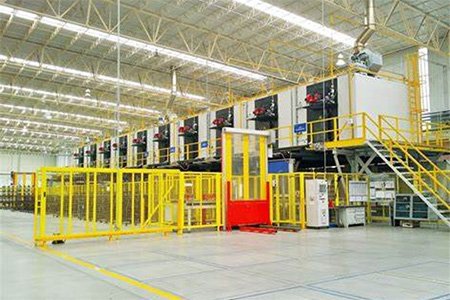
The forged Jaw Wire Grip does not meet the final performance standard, and it needs to go through a series of heat treatment processes to optimize its mechanical properties. The purpose of heat treatment is to further improve its strength, hardness, toughness, and wear resistance by changing the internal structure of the metal. For 35CrMo steel, we usually use the following main heat treatment methods:
Quenching:
By heating the workpiece to a certain temperature and then cooling it quickly, a hard and brittle martensite structure can be formed inside the steel, thereby improving hardness and strength.
Tempering:
The quenched steel usually becomes brittle and not tough, so tempering is required. Tempering is a reheating treatment performed at a lower temperature to reduce the internal stress formed during the quenching process and improve the toughness and plasticity of the material.
Normalizing:
Normalizing is the process of heating the metal to the recrystallization temperature and then cooling it naturally. The purpose is to refine the grain structure, thereby improving the uniformity and comprehensive mechanical properties of the material.
Through the combination of these heat treatment processes, we are able to manufacture Jaw Wire Grip parts that have both high hardness and sufficient toughness to ensure that they can work stably and long-term in complex working environments.
Surface treatment: galvanizing process
In order to further enhance the corrosion resistance of Jaw Wire Grip, we galvanize its surface. Galvanizing is to form a dense zinc layer on the surface of Jaw Wire Grip by electrochemical method. As an active metal, zinc can protect the steel substrate from oxidation corrosion by sacrificing itself in a humid or corrosive environment. Especially for Jaw Wire Grip in outdoor construction and long-term exposure to the air, the presence of the galvanized layer can significantly extend its service life and reduce the frequency of maintenance and replacement.
The galvanizing process can be divided into electro-galvanizing and hot-dip galvanizing. We choose the most suitable galvanizing process according to customer needs and different usage environments. Generally speaking, electrogalvanizing is suitable for products with high requirements for appearance and has a uniform bright surface; while hot-dip galvanizing is suitable for occasions with high requirements for corrosion resistance, and can form a thicker zinc layer with a more lasting protective effect.
Diversified Jaw Wire Grip Molds
As a professional Jaw Wire Grip manufacturer, we currently have more than ten existing Jaw Wire Grip molds, covering the mainstream specifications and types of Jaw Wire Grip needs on the market. Our product range includes Jaw Wire Grips with various tension levels and applicable wire diameters, which can meet the needs of various industries such as power, communications, and construction.
Versatile: suitable for Copper Cable, Covered Cable, Guy Wire, Wire Rope, ABC, Bare Aluminum, ACSR, ACSS, and AAC.
WLL:1500Lbs-12000Lbs;0.68t-9t
Cable Diameter:0.1in-1.8in;4.5mm-45.7mm
OEM Customization Service
In order to better serve our customers, we also provide OEM customization services. Customers can provide us with customized Jaw Wire Grip design solutions according to the special needs of their own engineering projects. We will design and manufacture molds according to customer requirements to ensure that the performance of Jaw Wire Grip fully meets the customer's construction requirements. Our OEM service covers all aspects from material selection, and design optimization to product manufacturing, ensuring that each customized product can meet the highest quality standards.
Quality Control and Testing
In order to ensure the quality of Jaw Wire Grip products, we have established a strict quality control system. International standards are used to control every link of production, from raw material inspection, temperature, and pressure monitoring during forging, to mechanical property testing after heat treatment. We also conduct tensile and fatigue tests on each batch of Jaw Wire Grip to ensure that they can withstand the expected load and maintain long-term stable performance during actual use.
By using advanced testing equipment such as electronic tensile testing machines, hardness testers, ultrasonic flaw detectors, etc., we can detect any potential problems that may affect the quality of Jaw Wire Grip and make timely adjustments and corrections during the production process.
As a key tool in the construction of power and communication lines, the design and manufacture of Jaw Wire Grip requires a high degree of specialization and precision. From material selection to the production process to final surface treatment and quality inspection, every link is crucial. We used high-strength 35CrMo alloy steel, combined with open-die forging and closed-die forging technology, and then a precise heat treatment process to ensure that Jaw Wire Grip has excellent performance under complex working conditions. In addition, the galvanized surface treatment further improves the corrosion resistance of the product and extends its service life.
With years of production experience and technical accumulation, HULK Metal currently has more than ten standard molds and provides OEM customization services to meet the diverse needs of customers. We are always committed to providing customers with high-quality and high-reliability Jaw Wire Grip products to help various construction projects go smoothly.
Article Navigation
Article Navigation
Industries
Foundries
-

July.01, 2024
Difference between hot forging and cold forging
READ MORE
-

June.27, 2024
What are the advantages and disadvantages of the hot forging process?
READ MORE
-

January.18, 2024
Forging: What Is It? What Are The Different Types of Hot Forging?
READ MORE
-

July.03, 2024
What are the processes of hot forging?
READ MORE



